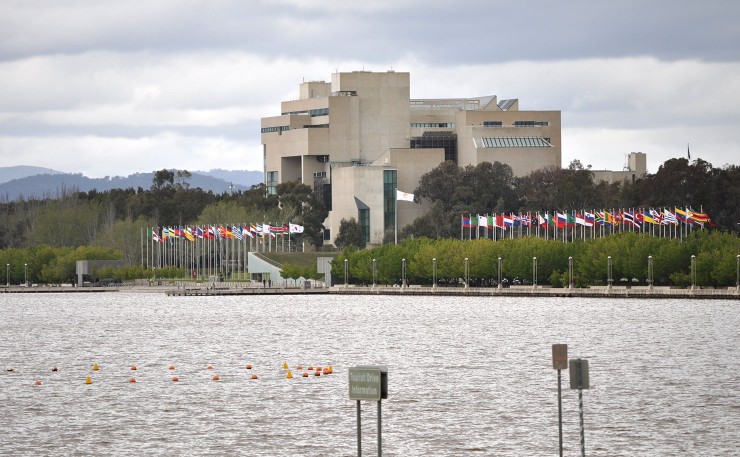DON’T MISS ANYTHING! ONE CLICK TO GET NEW MATILDA DELIVERED DIRECT TO YOUR INBOX, FREE!
If land title in Australia were determined by a game of ‘paper scissors rock’, then native title would be rock and everyone else’s rights to land would be paper (there’s no scissors). But a recent win in the High Court has given Indigenous Australia a tiny boost. Georgia McGrath from Marque Lawyers explains.
Like Mr Darcy’s good opinion in Pride and Prejudice, native title once lost, is lost forever. The Native Title Act does very little to assist Indigenous groups whose ancient rights have been snuffed out by colonisation. But a recent High Court decision shows that the flame of native title may be a tiny bit brighter than had been previously thought.
In Tjungarrayi v Western Australia, the High Court dealt with two very similar cases – two Indigenous groups in Western Australia had made claims for a determination of native title over land which was partly covered either by a petroleum exploration permit or a mineral exploration licence. In both cases, the Indigenous peoples had lost their exclusive rights to the land, but they still held non-exclusive rights to access, use and live on the claimed areas.
Sadly, there was a question in the initial proceedings whether the Tijwarl people had maintained a consistent connection with the land given the large numbers of Western Desert people who were wiped out by the disease and violence that came with European contact. Despite the near total destruction of their society, the court found that the ancestors of both groups had endured and continued to use, enjoy, protect and honour their land. Their non-exclusive native title rights were upheld.
In making that decision, the trial judges relied on a particular section of the Act (s47B) that allows a court to ignore circumstances that have extinguished an Indigenous group’s native title rights where the land claimed is vacant Crown land and there is no lease or freehold title covering the same land.
Unsurprisingly, the State of WA and BHP Billiton were unimpressed with this finding. They argued that s47B only allows a court to revive a group’s rights where there isn’t a lease in place – and the exploration permits should be characterised as leases.
The High Court focused largely on the proper construction of the definition of “lease” in the Act – pretty dry reading but the decision is impactful. It concluded that an exploration permit is not a “lease” within the meaning of s47B, for the completely semantic reason that the word “mining” isn’t used in that section. The legal reasoning is technical and boring, but it is more than a little bit shocking that the preservation of rights to country rested on such a tiny distinction.
It is tempting to read this case as saying that, as a blanket statement, mining leases will not extinguish native title but this is not necessarily so. All it tells us is that exploration licences, authorities and permits may not extinguish native title. An actual mining lease may well still extinguish native title entirely.
Even with exploration permits, the practical result isn’t all that clear. The High Court was influenced by the fact that the rights conferred on the permit holders were capable of co-existing with native title rights and interests because the permits involved “low level of intensity of use and occupation of land”.
This led the High Court to conclude that it wasn’t appropriate to characterise the permits as “leases”. This begs the question, if the intensity of use had been higher, would the native title rights have survived?
The court is saying, you can have rights to your land but only to the extent that a competing right hasn’t already muscled in – you can fit in around us. While the Tjiwarl and Ngurra Kayanta claims resulted in a positive determination of native title, the exploration permits are still valid and so mining activities can continue on what is now recognised as Indigenous land. The ultimate extinguishment of native title may have only been postponed.
In this case, the High Court showed a preference to grant native title despite potential extinguishment of those rights, where it can. But the Act as a mechanism of recognition and protection of Indigenous rights and responsibilities to country is a blunt one, applying the rigid certainty of English law to ancient concepts of country which it has never attempted to comprehend.
This case rested not on the connection of Indigenous people to country but purely on an interpretation of what is and is not a lease. Similarly, the native title process requires the claim area to be identified by strict boundaries – an artificial exercise where traditional customs don’t recognise lines drawn on a map.
As one Tijwarl claimant said in evidence: “We don’t have boundaries, that’s bullshit. Country is country.”
Now there’s a truth that should be universally acknowledged.
DON’T MISS ANYTHING! ONE CLICK TO GET NEW MATILDA DELIVERED DIRECT TO YOUR INBOX, FREE!
Donate To New Matilda
New Matilda is a small, independent media outlet. We survive through reader contributions, and never losing a lawsuit. If you got something from this article, giving something back helps us to continue speaking truth to power. Every little bit counts.




